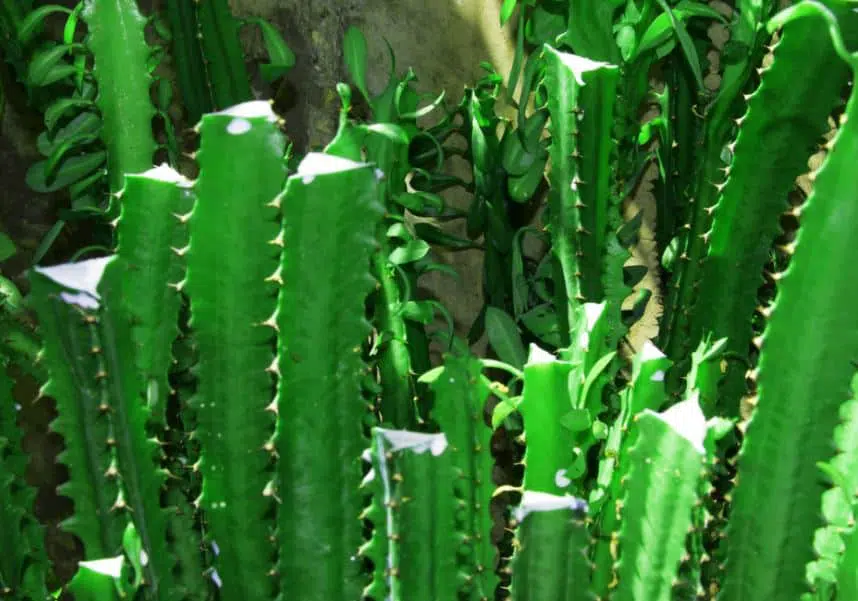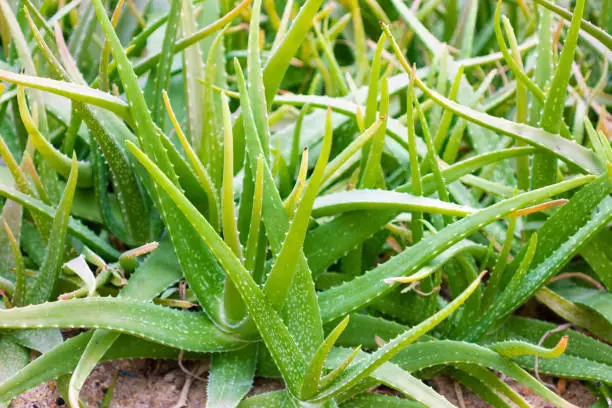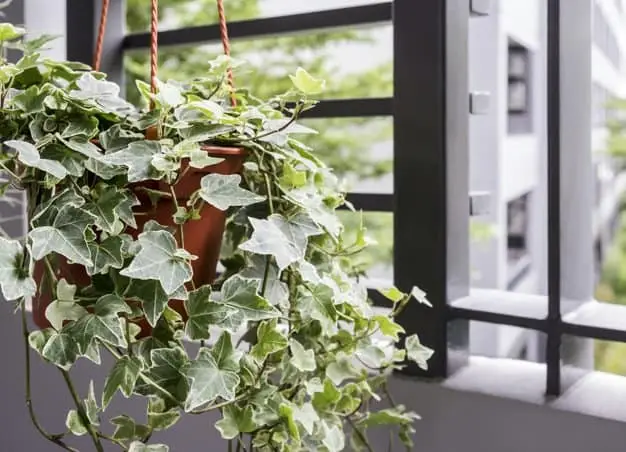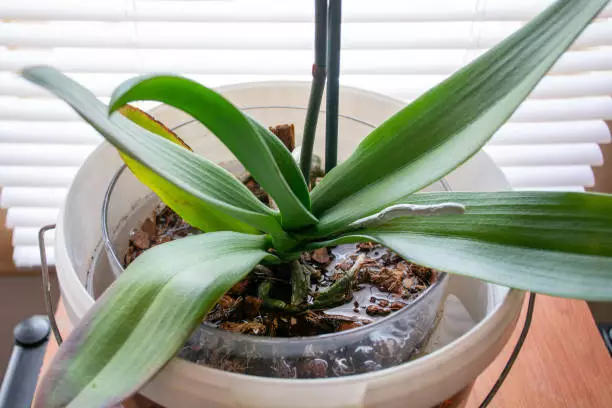Cacti are fascinating plants that have adapted to thrive in arid environments. They are known for their unique shapes, striking colors, and low maintenance requirements.
The answer to this question depends on several factors, including the type of cactus, the size of the pot, the temperature and humidity of the environment, and the amount of sunlight the plant receives. In general, cacti should be watered sparingly, as overwatering can lead to root rot and other issues. It is important to allow the soil to dry out completely between waterings, and to avoid getting water on the leaves or stem of the plant.
While it can be tempting to water cacti frequently, especially during hot and dry weather, it is important to remember that these plants are adapted to survive in harsh conditions. Overwatering can be just as harmful as underwatering, and can lead to a variety of problems, including wilting, yellowing, and fungal infections. By following a few simple guidelines, cactus owners can ensure that their plants remain healthy and vibrant for years to come.
Understanding Cactus Plants
Cactus plants are a unique type of plant that are adapted to harsh, arid environments. They are known for their thick, fleshy stems and leaves, which store water to help the plant survive in dry conditions. Cacti come in many different shapes and sizes, with over 2,000 species in the world.
Cacti are often kept as indoor plants due to their low maintenance requirements and interesting appearance. However, it is important to understand the specific needs of each cactus species in order to keep them healthy.
One important factor to consider when caring for cacti is their watering schedule. Cacti are adapted to survive long periods of drought, so overwatering can be detrimental to their health. In general, it is best to water cacti sparingly, allowing the soil to dry out completely between waterings. This can vary depending on the species of cactus and the environment it is in, so it is important to research the specific needs of each plant.
Another important aspect of caring for cacti is providing them with the appropriate soil and pot. Cacti require well-draining soil to prevent water from sitting in the roots and causing rot. A pot with drainage holes is also important to allow excess water to escape.
In addition to proper watering and soil, cacti also require adequate sunlight. Most cacti prefer bright, direct sunlight for several hours a day. However, some species may require more shade or indirect sunlight.
Overall, understanding the unique needs of cactus plants is essential for their health and longevity. By providing them with proper watering, soil, and sunlight, cacti can thrive in both indoor and outdoor environments.
The Importance of Watering
Watering is an essential aspect of caring for cactus plants. Proper watering is crucial for the survival and growth of cacti. Water is essential for the photosynthesis process, and without it, the cactus will not be able to produce food. In this section, we will discuss the importance of watering cactus plants and how often you should water them.
Cacti are adapted to survive in arid and semi-arid environments, where water is scarce. They have evolved to store water in their stems and leaves, which allows them to survive long periods of drought. However, this does not mean that cacti do not need water. In fact, overwatering can be just as harmful to cacti as underwatering.
The frequency of watering cactus plants depends on several factors, including the size of the plant, the type of soil, the humidity levels, and the temperature. In general, cacti should be watered when the soil is completely dry. Overwatering can lead to root rot, which can be fatal to cacti.
It is also important to water cactus plants correctly. When watering, it is best to water deeply and then allow the soil to dry out completely before watering again. This will encourage the roots to grow deeper in search of water, which will make the plant more resilient to drought.
In addition to the frequency and method of watering, the quality of the water is also important. Cacti are sensitive to the minerals and salts in the water, so it is best to use distilled or rainwater. Tap water can contain high levels of chlorine and fluoride, which can be harmful to cacti.
In conclusion, watering is a crucial aspect of caring for cactus plants. Cacti should be watered when the soil is completely dry, and the water should be of good quality. Overwatering can be just as harmful as underwatering, so it is important to water cacti correctly. By following these guidelines, you can help your cactus thrive and grow.
Signs of Overwatering and Underwatering
Cacti are known for their ability to store water, which is why they are often associated with desert landscapes. However, even cacti can be overwatered or underwatered, which can lead to serious problems. Here are some signs to look out for:
Overwatered Cacti
Overwatering is one of the most common problems with cacti. When a cactus gets too much water, its roots can become damaged, and the plant may start to rot. Here are some signs that your cactus may be overwatered:
- The soil is constantly moist or wet.
- The cactus is soft or mushy to the touch.
- The cactus is turning yellow or brown.
- The cactus is dropping its leaves or branches.
- There is mold or fungus growing on the soil.
If you notice any of these signs, it is important to stop watering your cactus immediately and let the soil dry out. If the problem persists, you may need to repot your cactus in fresh, well-draining soil.
Underwatered Cacti
While overwatering is a common problem, underwatering can be just as damaging to a cactus. When a cactus doesn’t get enough water, its roots can dry out, and the plant may start to wilt or become stunted. Here are some signs that your cactus may be underwatered:
- The soil is dry and dusty.
- The cactus is shriveling or wilting.
- The cactus is turning yellow or brown.
- The cactus is dropping its leaves or branches.
- The cactus is growing very slowly.
If you notice any of these signs, it is important to water your cactus thoroughly and make sure the soil is moist but not waterlogged. You may also need to adjust the amount of light your cactus is getting, as too much direct sunlight can dry out the soil quickly.
Overall, it is important to pay attention to your cactus and make sure it is getting the right amount of water. By watching for signs of overwatering or underwatering, you can help your cactus stay healthy and thriving for years to come.
When to Water Your Cactus
Cacti are known for their ability to survive in harsh, arid environments with minimal water. However, this does not mean that they do not require any water at all. Knowing when to water your cactus is crucial in ensuring its health and longevity.
The frequency of watering your cactus depends on various factors such as the type of cactus, the size of the pot, the type of soil, and the environment it is in. Generally, cacti require less water during their dormant period and more during their growing season.
During the summer months, when cacti are actively growing, they require more water. It is recommended to water them once a week or when the soil is completely dry. In contrast, during the winter months, when cacti are dormant, they require less water. It is recommended to water them once every two to three weeks or when the soil is partially dry.
It is important to note that overwatering your cactus can be just as harmful as underwatering it. Overwatering can lead to root rot and other fungal diseases. Therefore, it is important to ensure that the soil is well-draining and that excess water is able to escape from the pot.
In summary, the frequency of watering your cactus depends on various factors such as the type of cactus, the size of the pot, the type of soil, and the environment it is in. During the growing season, cacti require more water, while during the dormant period, they require less. It is important to avoid overwatering your cactus to prevent root rot and other fungal diseases.
How to Water a Cactus
Cacti are known for their ability to survive in harsh, dry environments. However, they still require water to thrive. Knowing how to water your cactus properly is essential to keeping it healthy. Here are some tips on how to water a cactus:
When to Water Your Cactus
The frequency of watering your cactus depends on various factors such as the type of cactus, the size of the pot, the season, and the environment. In general, cacti require less water than most other plants. Overwatering can cause root rot, which can be fatal to your cactus. Underwatering can also be harmful, causing the cactus to wilt and become dehydrated.
To determine when to water your cactus, you can use the “finger test.” Stick your finger about an inch into the soil. If it feels dry, it’s time to water your cactus. If it’s still moist, wait a few more days before watering.
How to Water a Cactus
When watering a cactus, it’s essential to use the right amount of water and to water deeply. A deep watering ensures that the water reaches the roots, promoting healthy growth.
To water your cactus, pour water slowly and evenly around the base of the plant, making sure not to get water on the leaves or stem. It’s best to use a watering can with a long spout to avoid getting water on the cactus.
After watering, allow the excess water to drain out of the pot. It’s crucial to remove any standing water in the saucer to prevent the roots from sitting in water, which can lead to root rot.
Tips for Watering a Cactus
Here are some additional tips for watering a cactus:
- In the summer, cacti may require more frequent watering than in the winter.
- Avoid watering your cactus during the dormant period, which is usually in the winter.
- If you’re unsure whether to water your cactus, it’s better to underwater than to overwater.
- Use a well-draining soil mix that allows excess water to drain away from the roots.
- Consider using a moisture meter to determine when to water your cactus.
By following these tips, you can ensure that your cactus receives the right amount of water and stays healthy.
Choosing the Right Soil and Container
When it comes to growing cacti, choosing the right soil and container is crucial for their survival. The soil should be well-draining and porous, as cacti are susceptible to root rot if the soil is too moist. It is recommended to use a cactus soil mix or a potting soil mixed with sand, perlite, or pumice to improve drainage.
The container should also have adequate drainage to prevent water from accumulating at the bottom and causing root rot. It is best to select a container with drainage holes, but if the container of choice does not have drainage holes, it is important to create them. This can be done by drilling or punching holes at the bottom of the container.
The size of the container should also be considered. It is recommended to choose a container that is slightly larger than the root ball of the cactus. A container that is too large can hold too much moisture and lead to root rot, while a container that is too small can restrict the growth of the cactus.
When selecting a container, it is also important to consider the material it is made of. Terracotta pots are a popular choice as they are porous and allow for air circulation, but they also dry out faster than other materials. Plastic containers are a good option for those who tend to overwater their plants, as they retain moisture better.
In summary, choosing the right soil and container is essential for the health of cacti. A well-draining soil mix and a container with adequate drainage are crucial to prevent root rot. The size and material of the container should also be considered when selecting the right container for a cactus.
Caring for Your Cactus in Different Climates
Cacti are known for their ability to survive in arid and desert-like conditions, but they still require proper care to thrive. The frequency of watering a cactus depends on the climate it is in. Here are some tips for caring for your cactus in different climates:
Arid and Desert Climates
Cacti are well-suited for arid and desert climates, where rainfall is scarce and temperatures are high. In these conditions, cacti can survive with very little water and can go weeks or even months without being watered. However, it is still important to monitor the soil moisture and water the cactus when the soil is completely dry.
Humid Climates
In humid climates, cacti are more susceptible to root rot and fungal diseases. It is important to make sure the soil is well-draining and to avoid overwatering. Cacti in humid climates should be watered less frequently than those in arid climates, and the soil should be allowed to dry out completely between waterings.
Temperate Climates
In temperate climates, cacti can be grown outdoors during the summer months but may need to be brought indoors during the winter. Cacti in temperate climates should be watered more frequently than those in arid climates but less frequently than those in humid climates. The soil should be allowed to dry out partially between waterings.
Light Conditions
Cacti require bright, indirect light to thrive. Direct sunlight can cause sunburn and damage to the plant. In arid and desert climates, cacti can tolerate more direct sunlight than those in humid or temperate climates. In humid or temperate climates, it is best to provide some shade during the hottest part of the day.
Location
The location of your cactus can also affect its care. Cacti grown indoors may require more frequent watering than those grown outdoors, as indoor environments tend to be drier. Cacti grown in pots should be planted in well-draining soil and should be watered more frequently than those grown in the ground. Cacti grown in the ground should be watered deeply but less frequently than those grown in pots.
Overall, caring for a cactus requires attention to its specific climate and location. With proper care, cacti can thrive in a variety of conditions.
Special Considerations for Certain Types of Cacti
When it comes to watering cacti, some types have special considerations that must be taken into account to ensure their health and vitality. Here are some of the most common types of cacti that require special attention:
Christmas Cactus
The Christmas cactus, also known as Schlumbergera, is a popular type of cactus that is often grown as a houseplant. This cactus requires more frequent watering than other types of cacti, as it is native to the rainforests of Brazil. In general, it is recommended to water a Christmas cactus once a week during the growing season, and once every two weeks during the dormant season.
Fruiting and Flowering Cacti
Cacti that produce fruit or flowers require more water than cacti that do not. This is because these cacti are expending more energy to produce their fruit or flowers, and require more water to support this process. It is recommended to water fruiting and flowering cacti once a week during the growing season, and once every two weeks during the dormant season.
Cacti with Leaves
Cacti with leaves, such as the Pereskia, require more water than cacti without leaves. This is because the leaves of these cacti are actively photosynthesizing, and require more water to support this process. It is recommended to water cacti with leaves once a week during the growing season, and once every two weeks during the dormant season.
Cacti with Pads
Cacti with pads, such as the Opuntia, require less water than other types of cacti. This is because these cacti are able to store water in their pads, and can survive for long periods of time without water. It is recommended to water cacti with pads once every two weeks during the growing season, and once a month during the dormant season.
Cacti with Spines
Cacti with spines, such as the Echinocactus, require less water than other types of cacti. This is because these cacti are adapted to dry environments, and are able to survive for long periods of time without water. It is recommended to water cacti with spines once every two weeks during the growing season, and once a month during the dormant season.
In general, it is important to remember that cacti are adapted to survive in arid environments, and do not require frequent watering. Overwatering can be just as harmful to cacti as underwatering, so it is important to strike a balance and water cacti only when necessary.
Additional Tips for Cactus Care
When it comes to caring for cacti, there are a few additional tips that can help ensure their health and growth. Here are some key points to keep in mind:
Watering: Cacti are adapted to survive in arid environments, so it’s important not to overwater them. In general, it’s best to water cacti sparingly, allowing the soil to dry out between waterings. The frequency of watering will depend on factors such as the size of the cactus, the type of pot it’s in, and the climate in which it’s growing. As a general rule, it’s better to underwater than to overwater cacti.
Potting: When choosing a pot for your cactus, it’s important to choose one that has good drainage. Plastic pots are often a good choice, as they are lightweight and easy to move around. However, it’s important to make sure that the pot has drainage holes in the bottom to allow excess water to escape.
Soil: Cacti prefer soil that is well-draining and porous. A good cactus soil mix will typically include a combination of sand, perlite, and peat moss. It’s also important to avoid soil that is too rich in organic matter, as this can lead to root rot.
Light: Cacti need plenty of sunlight to thrive, so it’s important to place them in a bright, sunny location. However, it’s also important to protect them from direct sunlight during the hottest part of the day, as this can cause them to overheat and dry out.
Misting: While cacti don’t need a lot of water, they do benefit from occasional misting. This can help to increase the humidity around the plant, which can be especially beneficial in dry climates.
Fertilizer: Cacti don’t need a lot of fertilizer, but they can benefit from occasional feeding during the growing season. A balanced cactus fertilizer can help to promote growth and flowering.
By following these tips and monitoring your cacti regularly, you can help ensure that they thrive and survive for years to come.
Frequently Asked Questions
How often should I water my indoor mini cactus?
Indoor mini cactus should be watered once every 2-3 weeks. It is important to let the soil dry out completely before watering again.
How often should I water my cactus in the winter?
During the winter, cactus should be watered less frequently than during the summer months. Watering once every 4-6 weeks is sufficient.
How often should I water my cactus indoors?
Cactus that are kept indoors should be watered once every 2-3 weeks. However, if the indoor environment is particularly dry, it may be necessary to water more frequently.
How often should I water my cactus in the summer?
During the summer, cactus should be watered more frequently than during the winter months. Watering once every 1-2 weeks is recommended.
How can I tell if my cactus needs water?
To determine if a cactus needs water, gently press your finger into the soil. If it feels dry to the touch, it is time to water. However, if the soil feels damp, it is best to wait a few more days before watering again.
How much water does a cactus need?
The amount of water a cactus needs depends on several factors, including the size of the cactus, the type of soil it is planted in, and the environment it is growing in. As a general rule, cactus should be watered enough to thoroughly saturate the soil, but not so much that the soil becomes waterlogged.
References
- Cactus and Succulent Society of San Jose. (n.d.). Basic culture. Retrieved from https://csssj.org/welcome_visitors/basic_culture.html
- University of Minnesota Extension. (n.d.). Cacti and succulents. Retrieved from https://extension.umn.edu/houseplants/cacti-and-succulents



